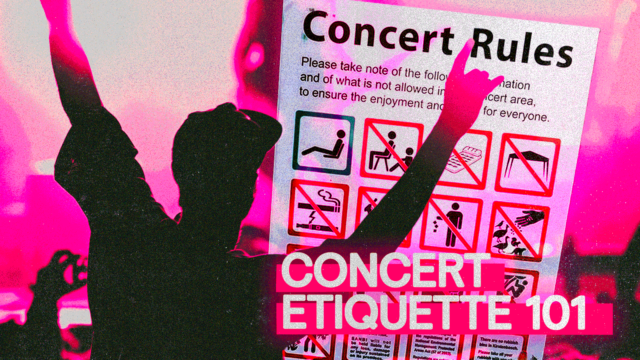Beat the system and go register to vote ASAP! Your ballot (and voice) could very well save our country.
Related: REGISTER TO VOTE: THIS NEW STEP MAKES IT EASIER FOR YOU TO BE A VOTER
If you’re reading this article, then I’m 99.9% sure that you have not registered yet. If you have, then good job! You must have been part of the 925,937 people who registered from September 1, 2020 to December 18, 2020. Now, you can help your friends and family who have not registered by sharing your experience to them. For the rest of the 99.9%, don’t worry. I’ll be the friend who will share my first-time experience to you.
As of October last year, I am now a registered voter. I decided to get it done right away because I felt extremely guilty for not being able to vote during the 2019 Philippine Senate election. When I finally got around to registering, I ended up having an incredibly hard time. I went back and forth from my house to the city hall for about 5 days. Here’s all I can say: Don’t make the same mistake as me and rely on the electoral ad campaigns. They won’t get you anywhere. Literally, if you check out the COMELEC “How to submit a registration application” tab, you’ll see block texts. Instead, follow this article for a more in-depth guide for registering to vote.
Are you qualified to register?
Before you begin the tedious process of registering, check if you are qualified to register first.
According to the COMELEC, the applicant must be:
– At least eighteen (18) years of age on or before May 9, 2022 National and Local Elections;
– A resident of the Philippines for at least one (1) year and in the place wherein he/she proposes to vote, for at least six (6) months immediately preceding the May 9, 2022 National and Local Elections; and
– Not otherwise disqualified by law.
For registering online:
Step 1: Visit the COMELEC online registration. And don’t forget to download the registration form prior to the actual act of registering to vote. Signing will be done in front of an election officer at the COMELEC office.
Step 2: Fill out all the necessary details.
Step 3: You can either set an appointment or not for the submission of your biometrics and form submission. If you choose to set an appointment, then skip to Step 2 of registering in person.
For registering in person:
Step 1: Call your barangay office and ask for the registration centers around the vicinity. You’d be surprised! There are actually a lot of registration centers around the area, which will most likely be your city hall. It may even be in the office of the barangay you’re calling. After inquiring, ask for the center’s number.
Step 2: Call the registration center (usually city hall) regarding their operating hours and set an appointment. Please, don’t rely on their Facebook operating hours or Google’s open now sign. The crazy thing is the city hall may be open, but registration is closed. Or it could be the other way around. Whichever it is from the two, make sure to call first.
Step 3: Go to the registration center before your appointment. You are there to ask questions.
This might sound crazy, but hear me out. You’re gonna need to hear it from the registration center yourself what you’ll be needing for application. Why? Well, there was a lot of miscommunication when I tried it out for myself. When I called the center, I asked for the requirements. The next day, I was ready to submit, but was unable to. Apparently, the person on the phone missed out on a few requirements.
Pro Tip: Registration centers have pre-printed application forms. You can take home a copy for you to fill up on your own time. Do this instead of accidentally printing the application in the wrong size online.
Step 4: Compile all the necessary paperwork and have an extra photocopy of it all. Photocopy. All. Your. Paperwork. Include your ID picture, NSO Birth Certificate, passport, valid IDs, and the likes. Some barangays require more than the necessary paperwork mentioned on the COMELEC website, so make sure you take note of all the necessities.
Step 5: Register.
Since this will most likely be your first time registering, you’re going to feel a little intimidated about the whole scenario. It’ll feel very much like a visa application or job interview, but it’s not. There aren’t a lot of questions, but you will get purple ink all over your fingers.
I can assure you 2 days is not bad for registering. This might be a little controversial, but it’s nearly impossible to get everything done in a day. Most of my friends have also registered this year and none of us were able to do it in a day. You can check out COMELEC’s Twitter account for scheduling updates, as well as of the hashtags #VoterReg2021 #MagpaRehistroKa for information on the register to vote movement on social media.
Now, that I’ve bestowed a few nuggets of wisdom you can now get that voting slip without much to worry about. It’s not as hard as other people make it out to be if you do it the right way. And, if you can, try to convince others to register as well. There are still 6.4 million unregistered citizens and we’d definitely like to increase that number. In fact, according to COMELEC Commissioner Rowena Guanzon, the target is 4 million new registrants, of which we are terrible far behind still.
There are no excuses either, because to accommodate as many as possible, the COMELEC has made registering to vote available on Saturdays. Done especially for those turning 18 and for those working from Monday to Friday, the office of the Election Officer will be more than willing to process your requirements to register to vote. A heads up, however, just with anything these days: don’t forget to bring your own pen and wear a mask and face shield.
Remember, your vote makes a difference. Take this opportunity to exercise your rights for your better tomorrow.





